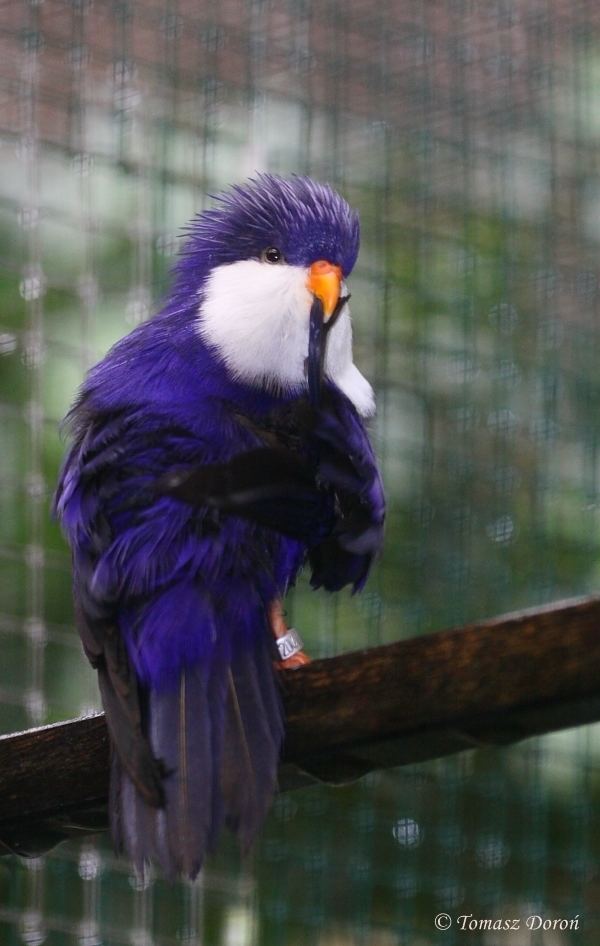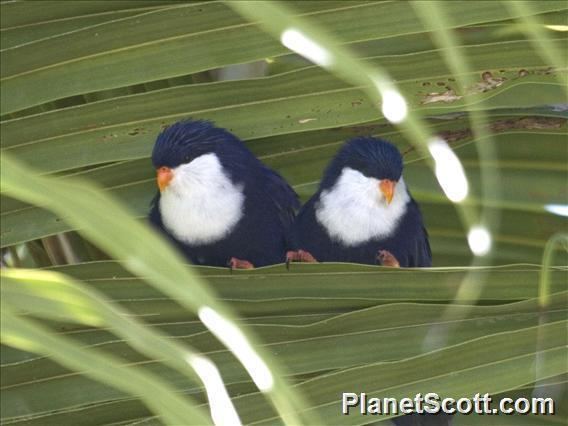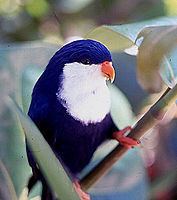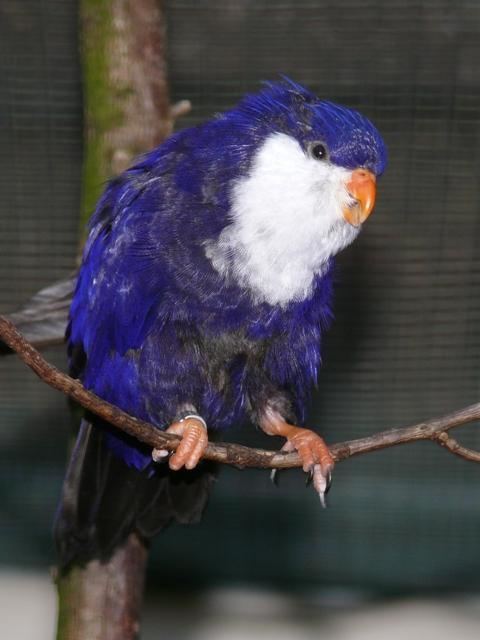Order Psittaciformes Scientific name Vini peruviana Rank Species | Phylum Chordata Superfamily Psittacoidea Subfamily Loriinae Higher classification Vini | |
 | ||
Similar Vini, Papuan lorikeet, Brown lory, Lories and lorikeets, Parrot | ||
The blue lorikeet (Vini peruviana) is a small lorikeet from French Polynesia and the Cook Islands. It is also known as the Tahiti lorikeet, violet lorikeet, Tahitian lory, blue lory, nunbird, and the indigo lory. It was formerly found on 23 islands around Tahiti, but now restricted to perhaps eight islands: Motu, Manuae, Tikehau, Rangiroa, Aratua, Kaukura, Apataki, Aitutaki, and possibly Harvey Island and Manihi. Its plumage is mainly dark blue and it has a white area over its upper chest, throat and face. The first captive breeding in the UK was by the Marquess of Tavistock in the 1930s. He was awarded a silver medal by the Foreign Bird League for this achievement.
Contents

Description

The blue lorikeet is 18 cm long with a short rounded tail. Its plumage is mainly dark blue and it has a white area over its upper chest, throat and lower face. Erectile feathers on the top of its head show light blue streaks. Its beak is orange and its irises are yellow-brown. It has orange legs. Adult males and females have identical external appearance. The juvenile lacks the white plumage of the adult and has a dark grey-blue face and lower parts. The juvenile also has a black bill, dark brown irises, and its legs are orange brown.
Feeding

Blue lorikeets depend on coconut palms for nesting and some of its food, and will frequent cultivated areas. They also roost in palm trees, rising at dawn and calling and preening before feeding. They are usually found in small flocks of less than ten birds. They are active birds, feeding on nectar, insects, and ground forage.
Status
They are endangered primarily by invasive species, including cats, rats, swamp harriers, and mosquitoes carrying avian malaria.
Cited texts



